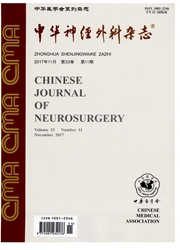

 中文摘要:
中文摘要:
目的 在整体水平上揭示海马区习得性突触传递长时程增强(LTP)的形成机制,并进一步探讨谷氨酸(Glu)浓度与LTP和行为学习之间的关系。方法使用脑部微量透析法、高效液相色谱法、慢性埋植电极技术进行电生理记录以及对学习行为监测相结合的实验方法。结果未进行条件反射训练大鼠海马齿状回(DG)注射α-氨基羟甲基恶唑丙酸(AMPA)受体阻断剂DNQX后,不影响DG区细胞外液中的Glu水平,但其群体峰电位(PS)幅值与给药前相比明显下降P〈0.01。在条件反射的训练中,注射DNQX后明显抑制条件反射的形成,且随着训练天数的增加,Glu浓度逐渐增加与开始训练前相比P〈0.01,但PS幅值却没有明显的变化P〉0.05。结论AMPA受体在海马DG区习得性LTP的形成过程中起触发作用,此受体的激活是海马DG区习得性LTP形成的必要条件。
 英文摘要:
英文摘要:
Objective To investigate the neurochemical mechanisms responsible for learning dependent long-term potentiation (LTP), the effect of DNQX on extracellular levels of glutamate (Glu) was measured in hippoeampal dentate gyrus(DG) region during the period of establishment and extinction of the conditioned reflex in free-moving conscious rats. Methods The concentrations of amino acids including Glu was measured by mierodialysis and high-peffornlance liquid chromatography (HPLC) methods and DNQX (60 nmol/L) was administrated by local-microinjection. The population spike (PS), a parameter of LTP, and conditional reflex were examined by implanted electrodes and combining eleetrophysiologicalbehavioral methods. Results There was no significant changes in the extracellular levels of Glu when localmicroinjection of DNQX (60 mol/L) into the DG region without training ( P 〉 0.05), but PS amplitude was significantly reduced ( P 〈 0.01 ). In the control group , the extracellular levels of Glu in the DG region were significantly increased ( P 〈 0.001 ) during the establishment of conditioned reflex and gradually returned following the extinction of conditioned reflex. The changes of Glu were correlated to the change of PS and both changes roughly follow the correct rate of behavior. Although the changes of PS were significantly attenuated, the concentrations of Glu were still significantly increased ( P 〈 0.05 ) by localmicroinjection of DNQX. The establishment of conditioned reflex was significantly prevented by DNQX. Conclusion AMPA receptor shows the trigger action in the hippocampal learning-dependent LTP.
 同期刊论文项目
同期刊论文项目
 同项目期刊论文
同项目期刊论文
 期刊信息
期刊信息
